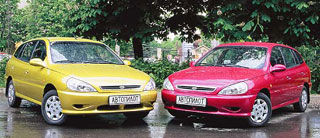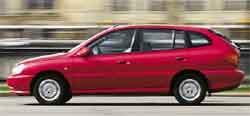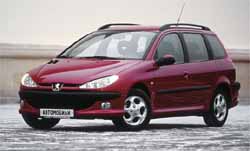Test drive Kia Rio Cinco 2001 - 2005
Sedanks
They are the same class, but completely different - not only in price The Hyunde emphasis of the 1999 model has been produced by the Taganrog Automobile Plant (Tagaz) of Doninvest since 2001. Machine complexes come from the Turkish Hyunde factory. Only one equipment is a standard set of equipment, including air conditioning, 1.5 l (75 kW) engine and a manual gearbox. Price - $ 9990.
The Hyunde emphasis of the 1999 model has been produced by the Taganrog Automobile Plant (Tagaz) of Doninvest since 2001. Machine complexes come from the Turkish Hyunde factory. Only one equipment is a standard set of equipment, including air conditioning, 1.5 l (75 kW) engine and a manual gearbox. Price - $ 9990. Kia Rio has been produced by the Kaliningrad company Autotor since 2001. Russian buyers are offered only with a 1.5 l (72 kW) engine with mechanical and automatic transmission boxes. Price - from $ 9500.
Skoda Fabia Sedan is the third body modification of Fabia. In Russia, it is offered with gasoline engines of 1.4 liters (50, 55, 74 kW) and 2.0 liters (85 kW), as well as 1.9 liters with diesel engines and without and without (47 - 74 kW). Price - from $ 11,000.
The European hatchback fashion has never found an understanding with us - a solid car should have an isolated trunk. It was not necessary for the driver to listen to the chime of cans with home canning and smell the aroma of canister with gasoline or even the fruits of his beloved garden. And the hatchback passengers are completely scribbled, when the cotton of the rear door sounds like a small explosion.
But what if a large and representative car is not affordable - to look for used, but solid or satisfied with the small? We chose the second option. Moreover, in practicality, compact sedans are now not inferior to hatchbacks - the folding rear seat almost equalizes their freight capabilities. Meet: two Russian Koreans and one German Czech. The national issue in the current auto industry is thoroughly confused.
Light the legs on the clothes
 Kia Rio of the Baltic Kaliningrad is perhaps the most memorable appearance. And the color is noticeable - you won’t pass by. By the way, the most seriously equipped from the entire Trinity of Kia Rio: there are two airbags, ABS, and a full electrical package, including heating mirrors, and adjusting the driver's seat pillow in height and angle of inclination. And, of course, air conditioning. All this wealth will cost the buyer $ 10800 - it would seem only to rejoice. For complete happiness, only a radio and .... a folding back of the rear seat is not enough. The first is easily fixable, but the second, alas .... In our test, this is the only machine without such a useful device.
Kia Rio of the Baltic Kaliningrad is perhaps the most memorable appearance. And the color is noticeable - you won’t pass by. By the way, the most seriously equipped from the entire Trinity of Kia Rio: there are two airbags, ABS, and a full electrical package, including heating mirrors, and adjusting the driver's seat pillow in height and angle of inclination. And, of course, air conditioning. All this wealth will cost the buyer $ 10800 - it would seem only to rejoice. For complete happiness, only a radio and .... a folding back of the rear seat is not enough. The first is easily fixable, but the second, alas .... In our test, this is the only machine without such a useful device. Hyunde accent from Taganrog (and Turkey), on the contrary, is quite modest: only air conditioning, electric windows and central lock. Close the mirrors manually adjust, the airbags are not provided - they don’t sleep at the wheel .... the rear seat is folding, but only the whole - the option of three and the stepladder will not work. But the price is very attractive - this is the only car below the magic mark of $ 10,000.
 The creators of Skoda-Fabia have a different approach: security is above all. ABS, PBS, two inflatable pillows are required. The back of the rear seat folding in parts (40/60) is combined with a separate pillow - this transformer allows you to combine. Another example of exemplary ergonomics is the driver's place with the seat adjustment in height and the steering column of variable length and inclination. But the excess servo drives in Skoda cannot be found - the rear windows are raised and lowered manually, the mirrors are adjusted in the same way. The air conditioner in our case is required. The price is 15,000 euros (at the time of delivery of the material - about the same amount in dollars). But six months ago, the price in dollars was one and a half thousand less ...
The creators of Skoda-Fabia have a different approach: security is above all. ABS, PBS, two inflatable pillows are required. The back of the rear seat folding in parts (40/60) is combined with a separate pillow - this transformer allows you to combine. Another example of exemplary ergonomics is the driver's place with the seat adjustment in height and the steering column of variable length and inclination. But the excess servo drives in Skoda cannot be found - the rear windows are raised and lowered manually, the mirrors are adjusted in the same way. The air conditioner in our case is required. The price is 15,000 euros (at the time of delivery of the material - about the same amount in dollars). But six months ago, the price in dollars was one and a half thousand less ... Salon fun
In compact cars, you involuntarily carefully evaluate the internal volume. As a rule, people do not threaten people with modest complexion of crowded, but the owners of heroic proportions should adhere to the principle of seven
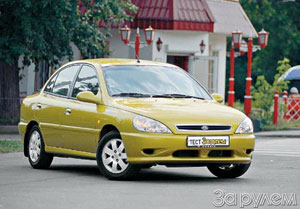 once measure, cut it once. Although any of the cars will provide an acceptable landing at the wheel of a driver up to 195 cm tall, but not all centimeters are the same. We do not recommend an accent to a complete driver - a low unregulated steering wheel will be on the knees, it will be very inconvenient. Rio is not suitable for long -legged - however, only those who came close to a two -meter line will begin to problems. Only the driver's place of Fabia easily adapts to the features of a variety of drivers. And the high location of the pillow and the width of the doorway provide the most comfortable landing in the car.
once measure, cut it once. Although any of the cars will provide an acceptable landing at the wheel of a driver up to 195 cm tall, but not all centimeters are the same. We do not recommend an accent to a complete driver - a low unregulated steering wheel will be on the knees, it will be very inconvenient. Rio is not suitable for long -legged - however, only those who came close to a two -meter line will begin to problems. Only the driver's place of Fabia easily adapts to the features of a variety of drivers. And the high location of the pillow and the width of the doorway provide the most comfortable landing in the car. Sitting in the rear places, it is not easy to identify the unambiguous leader, if only because the parameters of the cars are very close - 2.5 adult places with a height of 180 cm. Although the space for the knees is noticeably different: the closest kia loses about the most spacious Skoda by approximately a matchbox. On the other hand, the Rio interior is a little wider.
Well, and most importantly - trunk. With very close volumes, they are far from equivalent. The opening, opened by Kia Rio lid, is narrow and inconvenient due to stylish rear lights. Hyunde emphasizes a more flexible hold, but he is not able to compete with Fabia, where there are no protruding loops and the largest height and size of the opening.
READE SET GO!
 It's time to move on to an objective assessment of running qualities. The leader is determined immediately - the Hynde accent goes into the gap. To 100 km/h, he brings Kia for more than a second, and Skode - two. Participate our trinity in ring races, on a kilometer straight Hyunde would have left rivals by almost 100 meters! The gap between Fabia and Rio is not so great. Having lost the start due to the long first gear, Czech does not allow herself to lag behind more. Perhaps she could recoup, if there was no measurement distance to be reduced to two kilometers due to the repair of the dynamometric road.
It's time to move on to an objective assessment of running qualities. The leader is determined immediately - the Hynde accent goes into the gap. To 100 km/h, he brings Kia for more than a second, and Skode - two. Participate our trinity in ring races, on a kilometer straight Hyunde would have left rivals by almost 100 meters! The gap between Fabia and Rio is not so great. Having lost the start due to the long first gear, Czech does not allow herself to lag behind more. Perhaps she could recoup, if there was no measurement distance to be reduced to two kilometers due to the repair of the dynamometric road. The next exercise - acceleration without switching - equalizes the chances of Kia and Hyunde: thanks to shorter gears of Rio, no worse. Skoda loses again - the motor is clearly weak on the bottom.
In terms of brakes, the situation is diametrically opposite. Here is the recognized champion of Fabia, which can stop from 100 km/h four meters earlier than Rio, and seven earlier accents. The latter, by the way, is not equipped with ABS, and its brake amplifier seems to be just designed for it. Otherwise, it is quite difficult to explain the fact that the effort to the pedal leading to the locking of the wheels on dry asphalt is only 140 N. or are the Turkish tires of Lass Mirata to blame? Equipped by ABS Kia Rio slows down noticeably better, but the operation of the system is heard much stronger than in Skoda. However, the complaint about Turkish tires refers only to their inhibitory properties - the Hynda's run out of them turned out to be the greatest.
By valleys and in cities
 We are simply required to represent each of the three cars in typical urban and suburban conditions. In the metropolis, the advantage of the accent and Rio. The first is the best visibility, the latter is a more painful motor. But on Skoda in the city stream you feel not so confident. The characteristic of the engine does not allow us to lower the momentum below 2500, otherwise it is difficult to claim a vacant place in the neighboring row, and the tiny right mirror forces to turn out once again during rebuilding.
We are simply required to represent each of the three cars in typical urban and suburban conditions. In the metropolis, the advantage of the accent and Rio. The first is the best visibility, the latter is a more painful motor. But on Skoda in the city stream you feel not so confident. The characteristic of the engine does not allow us to lower the momentum below 2500, otherwise it is difficult to claim a vacant place in the neighboring row, and the tiny right mirror forces to turn out once again during rebuilding. But in suburban conditions, the leader changes again. Comfort and noise come first, and here the sedans of Korean origin have nothing to oppose to Skode-Fabia. If in the Czech machine the engine is practically not heard, then in Koreans the motors are listened to almost from idle speeds, and in Rio, vibration arises when the air conditioner is turned on. The same significant difference is in pendants. Skoda Fabia easily copes with small irregularities and with long waves of the road surface; At the same time, its pendants have a solid margin of strength. Hyunde emphasizes a little more tough, but this is only an illusion generated by a noise when passing small irregularities - in fact, its settings are closer to comfortable. Even worse than the case, Kia Rio: even with a partial load of energy intensity of the suspension. Shock absorbers still cope with small obstacles, and on large ones they have to sharply reduce speed.
Night maneuvers
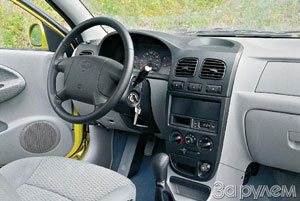 If under ordinary conditions the difference in control of machines is not too noticeable, then on the roads of an auto policy there is an opportunity to properly check the abilities of the entire trinity. A turn with a maximum lateral acceleration will easily put cars on a rank. Clear and energetic in road conditions, Hyund, the emphasis somehow immediately lost the clarity of reactions, began to fall into a deep skid, at the exit generously seasoned with casting and vibrations from side to side, and generally turned out to be unexpectedly crazy.
If under ordinary conditions the difference in control of machines is not too noticeable, then on the roads of an auto policy there is an opportunity to properly check the abilities of the entire trinity. A turn with a maximum lateral acceleration will easily put cars on a rank. Clear and energetic in road conditions, Hyund, the emphasis somehow immediately lost the clarity of reactions, began to fall into a deep skid, at the exit generously seasoned with casting and vibrations from side to side, and generally turned out to be unexpectedly crazy. Kia Rio is even sharper demonstrates the contrast between the highway and the landfill. A sharp, with obvious sports ambitions, the car begins to suffer from transverse swing and related control difficulties. In the limit, the same deep skidd with the development of course vibrations is an openly unpleasant surprise.
Skoda Fabia at first glance does not shine with verified reactions, but with speed growth remains as reliable and understandable as in simpler conditions. Even from the outside it looks completely different: without spectacular rolls, swinging and almost without a screeching, the car is easily controlled even at the limit of its capabilities.
Reflections on priorities
Skoda Fabia is a typical sample of a European car, where safety (both passive and active) is increasingly moving to the forefront. Yes, and comfort and ergonomics compared to rivals per step higher. Equipment may not be so solid, but thought out to the smallest detail. The dynamics of acceleration and economy are sacrificed by environmental indicators, but the situation can be corrected using high-octane gasoline AI-98. How effective this is in real operation, the big question is 80 kg of excess weight and the missing 100 cubes of the engine volume is not so easy to compensate for. But the brakes and handling are impeccable in the entire range of use.
Against such a background, Korean cars look pale. On the other hand, the gap between them and Skoda in price is as large as between Korean and domestic. Involuntarily, will you think about whether to chase Europe? And do our values \u200b\u200bcoincide with European ones? What is more important - two airbags or two seconds in acceleration to a hundred? The correct answer is five thousand green. By the way, part of this amount can be distinguished both in sound insulation and the best tires ...
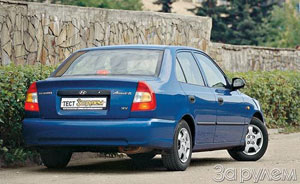
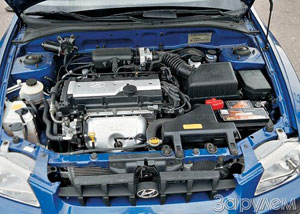
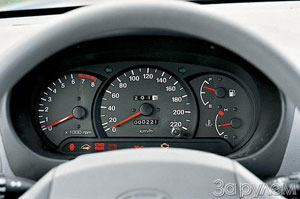
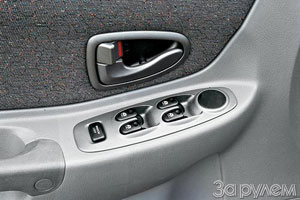
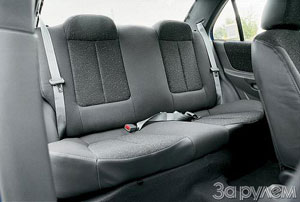

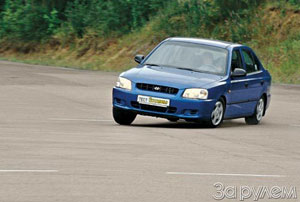

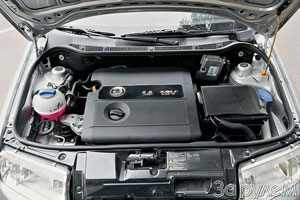






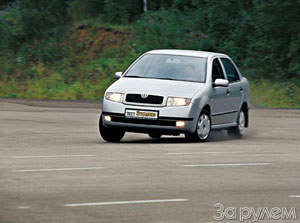




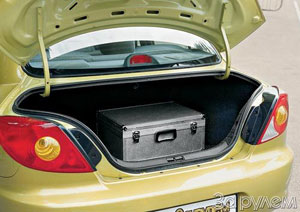
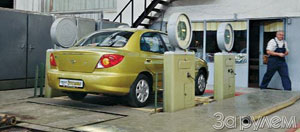

Text / Anatoly Fomin
Photo / George Sadkov
A source: The magazine "Driving"






